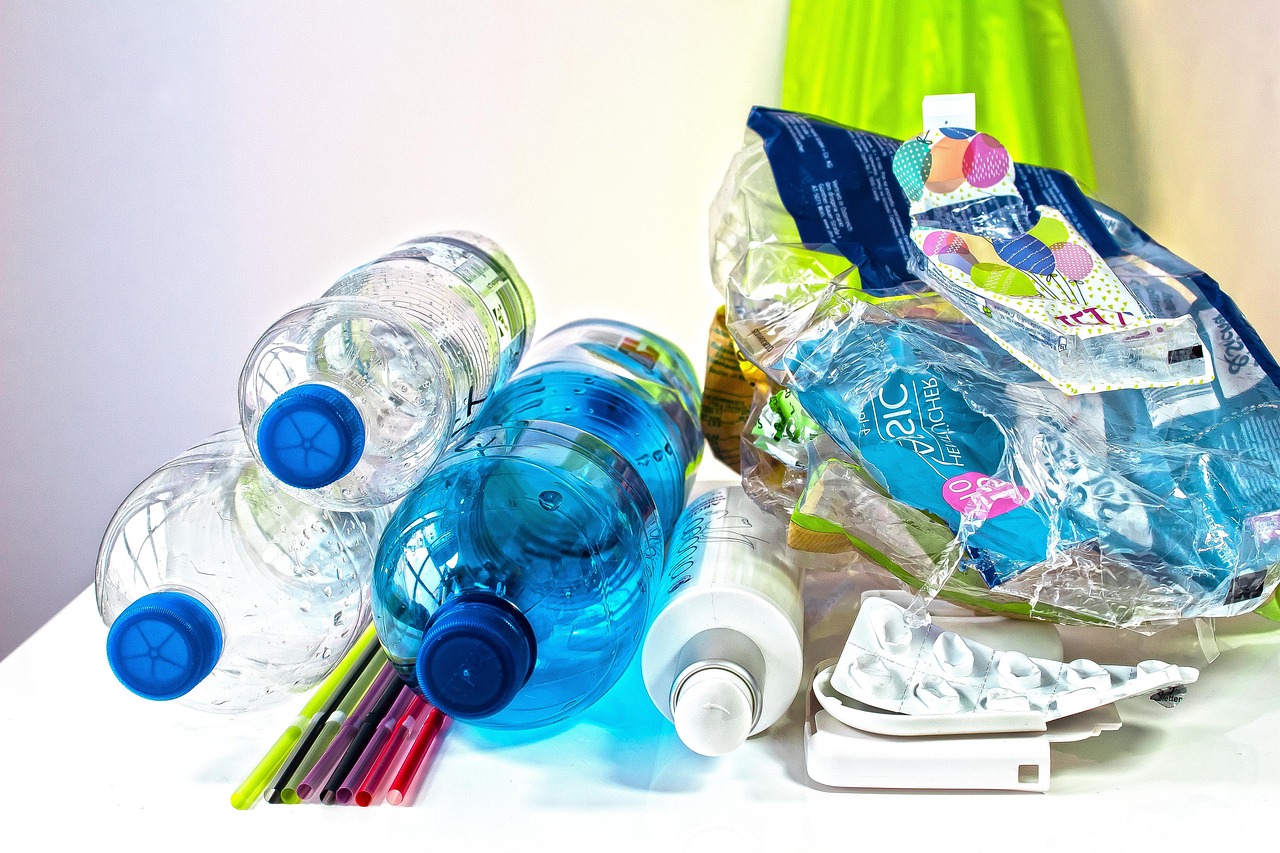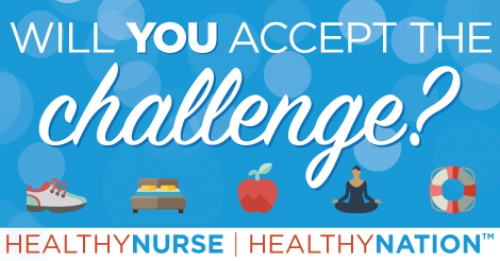ANA Healthy Nurse, Healthy Nation® Blog: Invisible Hazards: Endocrine-Disrupting Chemicals in Plastics
Published
Essential knowledge and action steps for nurses
An endocrine-disrupting chemical (EDC) is a substance that can interfere with your body’s hormones and cause a variety of health concerns. EDCs are found in many products people use daily, including food packaging, cosmetics, fragrances, and children’s toys.
EDCs and Their Impact on Your Health
Because EDCs interfere with many different hormones, they can cause a wide range of health issues. These include:
Babies and children exposed to EDCs are at increased risk of developmental abnormalities. During pregnancy, some EDCs can cross the placenta and enter a baby’s circulation. EDCs can also be transferred from a nursing mother to a baby through breast milk.
The Dangers Lurking in Plastics
One of the biggest EDC hazards to your health comes from plastics. Many common plastics contain multiple EDCs, including household products like baby bottles, toys, packaged food, and water bottles.
According to Plastic Pollution Coalition, at least 4,200 chemicals found in everyday plastics (or in the making of them) are known to harm both human and environmental health. These include EDCs such as:
Added Risks for Nurses
EDCs aren’t only found in common household products. They also permeate the health care setting, and nurses — and their patients — are exposed to them every day. Many medical devices and supplies contain EDCs, including:
EDCs are even found in the flooring nurses walk on during every shift!
The good news: Greater research and awareness of the risks of EDCs and other chemicals has led to a push for healthier alternatives — both in the home and in the workplace.
Tips to Reduce Your Risk at Home
You can help reduce EDC exposure for yourself and your family. Here are some simple steps to take:
As a nurse, you can also take steps to reduce your EDC exposure — and protect your patients as well. These include:
Ways to Help Your Community
Nurses can use their trusted voices to educate their communities on the dangers of EDCs in a variety of ways, including:
Creating a Healthier Environment for All
Nurses play an important role in reducing the impact of EDCs. By learning about your exposure risk, making safer choices at work and at home, and educating the public, you can help create a healthier environment for everyone.
What have you done to reduce toxic chemicals and make your workplace safer? Share with us in our discussion below.

Not a member of Healthy Nurse, Healthy Nation (HNHN) yet? Join today!
Join our monthly challenges at hnhn.org/challenges!
EDCs and Their Impact on Your Health
Because EDCs interfere with many different hormones, they can cause a wide range of health issues. These include:
- Certain cancers
- Diabetes and metabolic issues
- Early puberty
- Infertility
- Learning challenges
- Neurological disorders
Babies and children exposed to EDCs are at increased risk of developmental abnormalities. During pregnancy, some EDCs can cross the placenta and enter a baby’s circulation. EDCs can also be transferred from a nursing mother to a baby through breast milk.
The Dangers Lurking in Plastics
One of the biggest EDC hazards to your health comes from plastics. Many common plastics contain multiple EDCs, including household products like baby bottles, toys, packaged food, and water bottles.
According to Plastic Pollution Coalition, at least 4,200 chemicals found in everyday plastics (or in the making of them) are known to harm both human and environmental health. These include EDCs such as:
- Bisphenol-A (BPA): A wide range of common products may contain BPA, including baby bottles, water bottles, and toys. BPA resins are also found in food packaging and the lining of aluminum food and beverage containers. Some research suggests BPA can affect a child’s brain and prostate gland and cause behavioral issues. The chemical may also contribute to high blood pressure, type 2 diabetes, and cardiovascular disease.
- Dioxins: Dioxins are chemicals created during the plastic manufacturing process. They contribute to environmental pollution and can affect your immune and reproductive systems. They are also linked to some cancers.
- Per- and polyfluoroalkyl substances (PFAS): PFAS are a group of chemicals that have been used in household products since the 1940s. They are found in products ranging from nonstick cookware and food packaging to carpets and upholstery. These chemicals build up over time in the environment, animals, and humans. PFAS can contribute to infertility, developmental delays in children, and cause an increased risk of cancer and obesity.
- Phthalates: Phthalates help make plastics more flexible, softer, and stronger. They are used in products like toys, cosmetics, food packaging, and fragrances. Research shows a link between phthalate exposure and infertility, neurodevelopment issues in children, and chronic conditions like asthma, allergies, and obesity.
Added Risks for Nurses
EDCs aren’t only found in common household products. They also permeate the health care setting, and nurses — and their patients — are exposed to them every day. Many medical devices and supplies contain EDCs, including:
- Blood bags
- Catheters
- Gloves
- Syringes
EDCs are even found in the flooring nurses walk on during every shift!
The good news: Greater research and awareness of the risks of EDCs and other chemicals has led to a push for healthier alternatives — both in the home and in the workplace.
Tips to Reduce Your Risk at Home
You can help reduce EDC exposure for yourself and your family. Here are some simple steps to take:
- Ditch nonstick cookware: Switch to PFA-free stainless steel, cast iron, or ceramic pans.
- Limit plastic use: Swap your plastic food containers and bottles for sustainable glass or stainless steel options. Look for toys, textiles, and furniture made from natural materials.
- Look at labels: Ingredients matter. Many personal care products are now labeled “phthalate-free” or “BPA-free.” You can also check out this list of safe products from the Environmental Working Group.
As a nurse, you can also take steps to reduce your EDC exposure — and protect your patients as well. These include:
- Advocacy: The American Nurses Association (ANA) encourages nurses to advocate for decreased toxic chemicals and safer substitutes to protect themselves, co-workers, patients, communities, and the environment from exposure. One way to do that is by joining your facility’s purchasing committee and advocating for the use of “green” supplies. Ensure your workplace has a program or policy to reduce and, when possible, eliminate toxic chemicals.
- Expanding your knowledge: Learn all you can about EDCs and other toxic chemicals at work. Attend any training, education, and monitoring programs offered at your workplace. Staying informed will help you recognize whether you and your patients are at risk of exposure.
Ways to Help Your Community
Nurses can use their trusted voices to educate their communities on the dangers of EDCs in a variety of ways, including:
- Educate: Host events to raise awareness about EDCs in household products and share reliable information and resources.
- Legislate: Join an environmental health task force at work, in your community, or within your State Nurses Association. These groups can work to push forward legislation that reduces use of toxic chemicals.
- Support research and data collection: Use your nursing knowledge and data to contribute to a variety of research initiatives that study how endocrine disruptors impact human health.
Creating a Healthier Environment for All
Nurses play an important role in reducing the impact of EDCs. By learning about your exposure risk, making safer choices at work and at home, and educating the public, you can help create a healthier environment for everyone.
What have you done to reduce toxic chemicals and make your workplace safer? Share with us in our discussion below.

Not a member of Healthy Nurse, Healthy Nation (HNHN) yet? Join today!
Join our monthly challenges at hnhn.org/challenges!
Blog Quality of Life
10/07/2025 4:07pm CDT



Post a Comment or Question